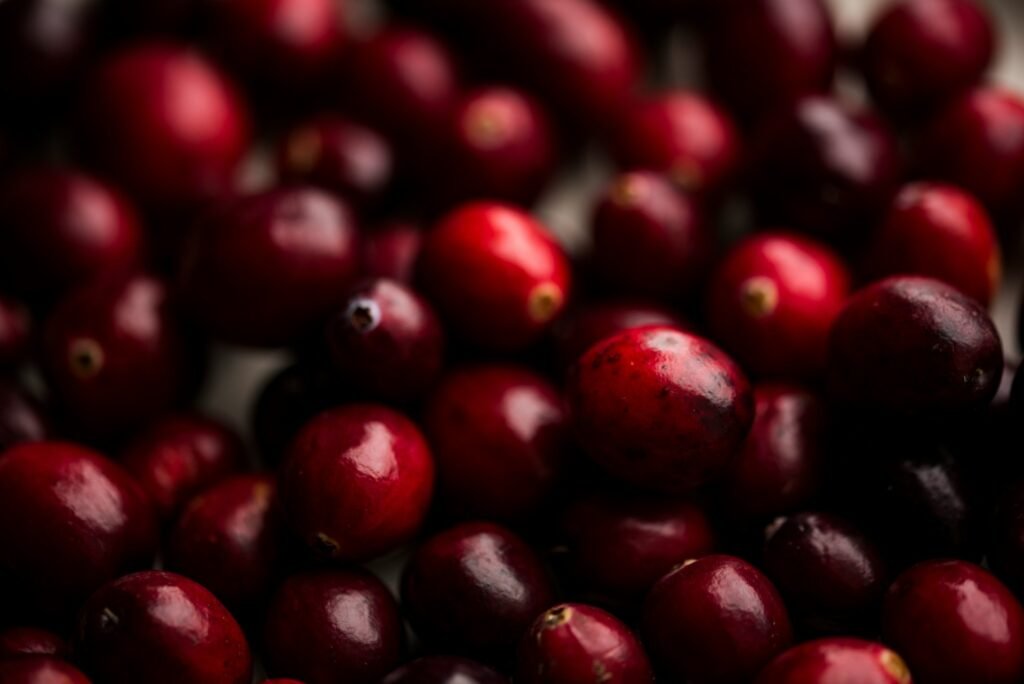Hey plant enthusiasts! Today, we’re tackling a tricky topic – the highbush cranberry (Viburnum trilobum). This shrub might have “cranberry” in its name, but it’s not exactly what you might think. Get ready for a botanical surprise as we explore the wonders (and quirks) of this versatile plant!
What’s So Special About Highbush Cranberry?
It is a native shrub to North America. It’s a large, hardy shrub that can grow up to 8-15 feet tall and just as wide. It has dark green leaves that turn purplish-red in autumn, alongside drooping clusters of bright red berries.
Unlike its bog-loving cousin, the true cranberry, the highbush cranberry is a tall, showy shrub that thrives in well-drained soil. It can reach up to 15 feet tall, with beautiful white flowers in spring that transform into bright red berries in fall. These berries might look like cranberries, but they have a much tarter taste.
A Feast for the Eyes and…Feathered Friends
While it’s fruit might not be your cup of tea (or juice!), it’s a favorite among birds. Throughout the winter, the berries provide a vital source of food for feathered creatures, making it a great addition to a wildlife-friendly garden.
First things first, it isn’t actually a true cranberry, but it shares a resemblance in appearance and taste. This hardy shrub is native to North America, boasting clusters of bright red berries that ripen in the fall. But its uniqueness doesn’t end there! Its leaves resemble those of maple trees and turn stunning shades of red and purple in autumn, adding a burst of color to any landscape.

Uses of the Highbush Cranberry
It is a versatile plant. It’s commonly used as a hedge or screen, as it can be grown into a dense thicket that provides privacy and shelter. The berries, which soften and sweeten over winter, are very tart and excellent in jams and jellies. They’re also a favorite among birds like the Cedar Waxwing.
It isn’t just a pretty face; it’s a workhorse in the garden! Its dense, rounded form makes it a great choice for privacy hedges or windbreaks. The attractive fall foliage adds a pop of color to the landscape, and the white flowers in spring attract pollinators like bees and butterflies.
Benefits of the Highbush Cranberry
This plant is a boon for wildlife and pollinators. It serves as a host plant to numerous moths, including the Green Marvel and Pink Prominent. The wide branching provides cover for small mammals and birds. The berries are an important food source for various bird species.
The bark of it yields a powerful antispasmodic, which has been used for relief of menstrual and stomach cramps and asthma.
- Edible Delights: While the berries might be a bit tart for munching straight off the bush, they make fantastic additions to jams, jellies, sauces, and even baked goods. Plus, they’re packed with Vitamin C, adding a healthy boost to your diet.
- Medicinal Marvel: Indigenous peoples have long utilized it for its medicinal properties. From soothing upset stomachs to alleviating menstrual cramps, this plant has a range of traditional uses. Some even use it as a natural remedy for colds and flu due to its high Vitamin C content.
- Wildlife Haven: Birds are particularly fond of it’s berries, making this shrub a popular choice for backyard birdwatchers. It’s like a buffet for our feathered friends, providing them with essential nutrients during the colder months.

Drawbacks of the Highbush Cranberry
While it’sis a wonderful plant, it does have a few drawbacks. If picked after a heavy frost, the fruit can develop a musty, somewhat objectionable odor during cooking. Also, it’s susceptible to occasional aphids, leaf spot, stem blight, and powdery mildew.
There are a few things to keep in mind before planting a it. They can be susceptible to certain pests and diseases, so proper care is important. Also, the berries take a few years to mature, so be patient!
- Pucker Up: As mentioned earlier, the berries can be quite tart when eaten raw. So, if you’re planning on sampling them straight from the bush, prepare for a pucker-inducing experience.
- Space Consideration: While it can add beauty and utility to your landscape, it’s important to note that it can spread quite vigorously if not properly maintained. Make sure you have enough space to accommodate its growth or be prepared to keep it in check with regular pruning.
- Toxic Twist: While the berries are safe for human consumption when cooked, the seeds contain small amounts of cyanide and should be avoided. Make sure to remove them before using the berries in recipes.
In Summary
A Native Beauty with Hidden Gems
The highbush cranberry might not be a true cranberry, but it’s a valuable native plant with a lot to offer. It provides food for wildlife, beauty for the garden, and even has some potential culinary uses. So, if you’re looking for a versatile shrub with a unique twist, it might just be the perfect addition to your landscaping adventure!
In conclusion, Viburnum trilobum, or the Highbush Cranberry, is a remarkable plant with a multitude of uses and benefits. From its culinary applications to its medicinal properties and wildlife support, there’s a lot to love about this versatile shrub. Just remember to embrace its tartness, give it room to flourish, and always use caution when enjoying its bounty. Happy exploring, nature lovers!
Affiliate Links
Related Reading
Highbush Cranberry – Viburnum trilobum | Prairie Nursery. https://www.prairienursery.com/highbush-cranberry-viburnum-trilobum.html.
Highbush Cranberry (not a true cranberry) – Cooperative Extension …. https://extension.umaine.edu/cranberries/highbush-cranberry/.
viburnum trilobum highbush cranberry|Highbush Cranberry – Viburnum Trilobum | Shrubs | Cold Stream Farm. https://www.coldstreamfarm.net/product/highbush-cranberry-viburnum-trilobum/.
Foraging Highbush Cranberry for Food & Medicine – Practical Self Reliance. https://practicalselfreliance.com/highbush-cranberry/.

Leave a Reply